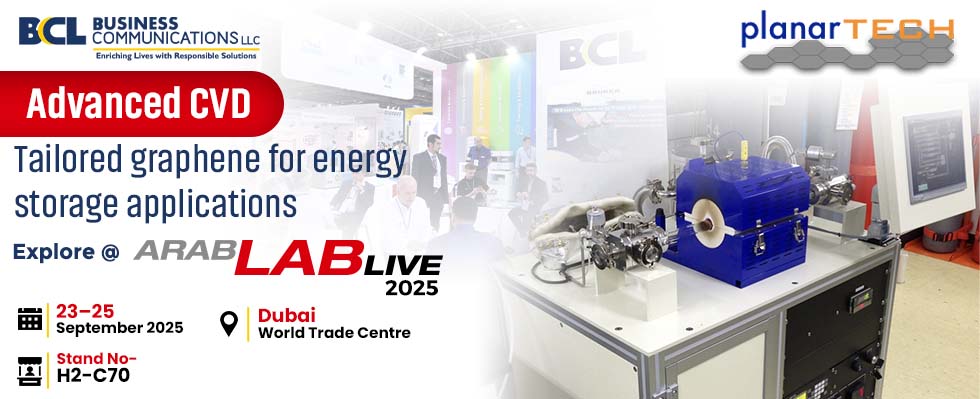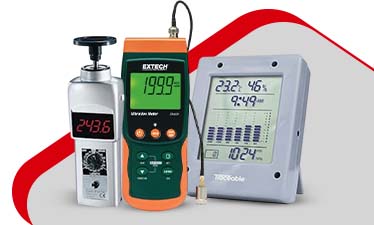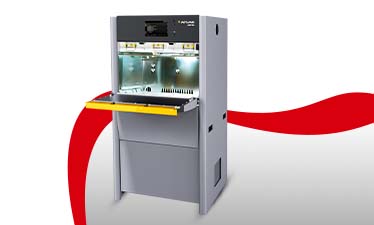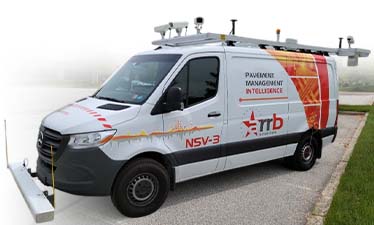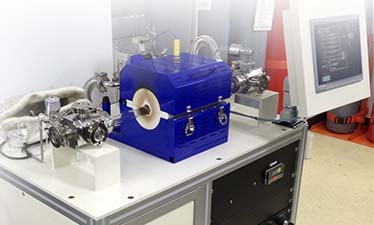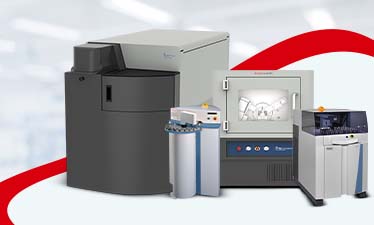Breaking Boundaries in 2D Materials With Planartech’s Graphene and hBN CVD
We are pleased to share that BCL will be presenting advanced material synthesis systems at ArabLab 2025, hosted at the Dubai World Trade Centre from 23–25 September. You will find us at Stall H2-C70, where we will highlight our partnership with Planartech, a global leader in CVD machines for graphene and h-BN research.
At this year’s ArabLab we will be joined by specialists and global suppliers, and one of the most anticipated showcases is Planartech’s planarGROW series. These systems are enabling both laboratories and industries to scale up material growth with reproducibility and adaptability.
Why Graphene and h-BN Are Key
Graphene is moving beyond theory into applications ranging from energy storage to flexible electronics. Its market is forecast to cross USD 450 million by 2028, growing at over 40% CAGR, with CVD synthesis identified as the most reliable route to high-quality, wafer-scale material.
Meanwhile, h-BN has become indispensable in electronics as an atomic-scale insulator. Produced through chemical vapor deposition machines, it provides chemical stability and thermal resistance, critical for layered heterostructures. Together, these materials are defining the future of nanotechnology.
Planartech CVD Platforms: Expanding Possibilities
The planarGROW series from Planartech brings a wide spectrum of CVD systems to laboratories and industries working with graphene and h-BN. Instead of focusing on a single configuration, the range supports different scales of research and production:
- Compact benchtop units for teaching and early-stage experiments
- Advanced multi-zone furnaces capable of wafer-scale production
- Flexible set-ups that adapt seamlessly from graphene to h-BN growth
What makes these systems distinctive is their modular architecture:
- Adjustable gas lines allow for expansion when new processes are introduced
- Multiple precursor options ensure varied growth pathways
- Configurations can shift quickly between research needs and industrial applications
This flexibility ensures researchers can rely on the same system as they scale from academic projects to industrialisation of 2D materials. Adoption is growing worldwide, in step with the CVD equipment market, valued at USD 1.3 billion in 2023 and forecast to grow at 13–15% CAGR through 2030.
How CVD Platforms Are Shaping Tomorrow’s Materials
The chemical vapour deposition market is on a strong upward curve, valued at USD 1.3 billion in 2023 and forecast to expand at a 13–15% CAGR through 2030. This growth is closely tied to demand for advanced 2D materials such as graphene and h-BN, where reproducibility and scalability are essential.
CVD platforms like Planartech’s planarGROW series are central to this momentum, as they bridge market expansion with academic and industrial breakthroughs. Their impact is seen in several ways:
- Graphene at scale – High-purity, wafer-level growth with consistent electrical and mechanical properties, critical for flexible electronics and energy storage.
- h-BN synthesis – Controlled layer-by-layer growth down to atomic thickness, delivering stability and thermal resistance for heterostructures.
- Adaptability – Modular systems that can switch between research-focused setups and industrial-scale production without complex reconfiguration.
- Regional alignment – In the Middle East, the molecular spectroscopy and advanced materials market is expected to expand at 7% CAGR from 2025–2031, and scalable CVD systems match the region’s increasing investments in energy, pharmaceuticals, and materials science.
- Research to reality – Leading institutions such as Dongguk University and KIST in South Korea have integrated planarGROW platforms, underlining how reliable CVD processes transform laboratory insights into practical applications.
This combined global and regional momentum confirms that CVD is no longer just a research tool but the backbone of next-generation material science and industry adoption.
ArabLab: A Global Stage for Breakthroughs
The ArabLab 2025 Exhibition will be witnessing a diverse range of laboratory technologies, attracting more than 12,000 professionals each year. We at BCL are bringing our curated range of innovations to contribute to this global platform. Joined by industry leaders and global suppliers, we are extremely excited to be showcasing chemical vapor deposition machines that stand at the frontier of material science.
We are arriving at the ArabLab alongside Planartech to present how graphene and hBN CVD systems can enable both academic progress and industrial application.
Join us at Stall H2-C70, Dubai World Trade Centre, 23–25 September 2025
We look forward to welcoming you and exploring how advanced CVD technologies can unlock the next chapter of material innovation.



